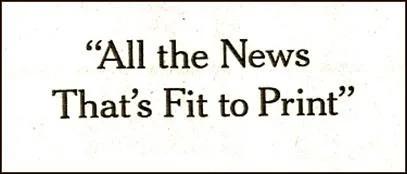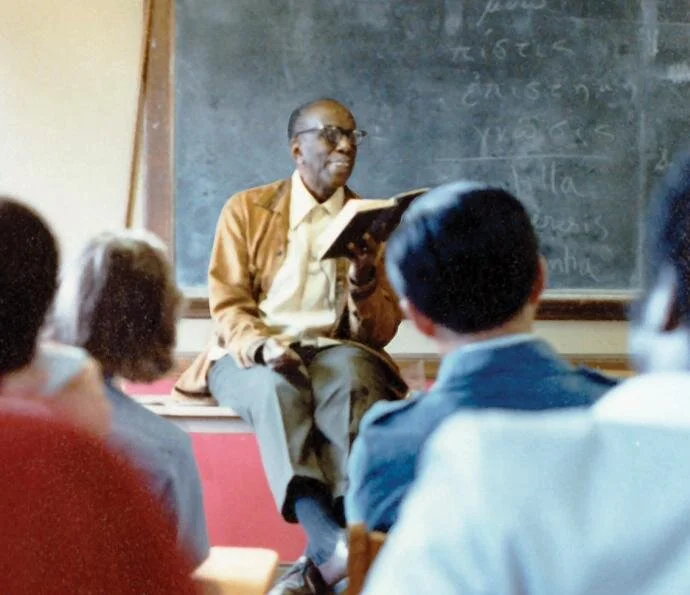Friday Reflection: On Prayer and the Spiritual Life after the Darkness of COVID-19
Photo of Henri Nouwen by Frank Hamilton
I. I’ve been thinking lately about the post-COVID-19 environment and taking in the many wide-ranging conversations in the media about people returning to work and how burned out and frightened so many people are about what’s ahead, now that the dark clouds of COVID-19 are beginning to lift. How many of us are “burned out”? And what might we be afraid of and/or angry about? This little reflection is meant to be a modest assessment of our “post-pandemic temperatures” and, assuming these “temperatures” are on the high side, how we might bring them down and find a way to rediscover ourselves or, perhaps I should say, to really discover ourselves for the first time.
II. For several years, I have been using Henri Nouwen’s Book of Hours for my daily reflections. The passages for reflection edited by Robert Waldron, are all taken from Nouwen’s books. Book of Hours is among a number of modern texts that seek to replicate the monastic hours using a four-week cycle. In Nouwen’s Book of Hours there are five “hours” to attend to each day: Vigils (early morning); Lauds (morning); None (afternoon); Vespers (dusk); and Compline (evening). Keep in mind that the four-week cycle repeats itself, so at the end of each month, one returns to the same readings. For me, there is great value in such an approach to the discovery/rediscovery of ourselves in God.
III. My time spent with the Book of Hours has shown me that, for Nouwen, the principal elements of the Spiritual Life are (1) Prayer; (2) Solitude; (3) Healing; and (4) Ministry. For this reflection, I want to consider Nouwen’s perspective on the primacy of prayer in the spiritual life. I will cover the other three elements in subsequent Friday Reflections.
IV. For Henri Nouwen, the spiritual life is the life we live “in the midst of the pains and joys of the here and now.” How we construct and maintain this life is “to begin with a careful look at the way we think, speak, feel, and act from hour to hour, day to day, week to week, and year to year, in order to become more fully aware of our hunger for the spirit.” (Making All Things New, p. 21, quoted in the Book of Hours). The challenge of this statement, of course, is the demand it places on how we lead our everyday lives, “in the here and now.” And yet, after the travails of COVID-19 and the loss of over 600,000 of us in the United States alone, and the thousands upon thousands of us who are still ill, Nouwen’s conviction offers a compelling alternative to our lives before the pandemic when we were perhaps not looking at things as carefully as we might, or what is worse, when we were, even then, hopelessly bewildered by everything around us. And it is the “then” that COVID-19 has forced us to examine.
V. One of the conditions for a vital spiritual life is how we “see” things. Nouwen writes about our being See-ers, people who are called to see the presence of God in the everyday, in the “here and now” And prayer is the major instrument with which we “see.” In Book of Hours, Nouwen references the well-known passage from Paul’s First Letter to the Thessalonians, “Pray constantly, always and for everything give thanks,” (5:17-18), and his perspective on “praying constantly” is most compelling:
To pray unceasingly, as St. Paul asks us to do, would be completely impossible if it meant to think constantly about or speak continuously to God. To pray unceasingly does not mean to think about God in contrast to thinking about other things, or talk to God instead of talking to other people. Rather, it means to think, speak, and live in the presence of God.
— Spiritual Direction, p. 61, quoted in Book of Hours
VI. Nouwen tells us that formal or informal “vocal prayer,” the prayer we may know best, is only one way in the prayer inventory. Here are other ways of prayer that Nouwen points to: Prayer is listening. Prayer is thinking. Prayer is being still and silent. Prayer is waiting. Prayer is engaging. Prayer is imagining. Prayer is learning. Prayer is being mindful, aware, and attentive. Prayer is personal. Prayer is steadfastness. Prayer is knowing. Prayer is being present. Prayer is conversational. Prayer is accepting. Prayer is searching. In other words, there is not one “way” to pray, especially if we are seeking to live in God’s presence.
VII. One can read and reread Nouwen over and over and realize that there is still more to learn about prayer, which is one reason I have become so attached to the Book of Hours. I close this reflection with a brief passage from his book, Here and Now, a passage that appears in the Book of Hours and says everything about both prayer and its practice:
Prayer is the discipline of the moment. When we pray, we enter into the presence of God whose name is God-with-us. To pray is to listen attentively to the One who addresses us here and now.
— Here and Now, p. 22
The “there and then” is no more. COVID -19 has taken care of that. “Here and now” is the new reality. As the dark clouds continue to lift and we are inclined to stay in the “there and then,” because it is what we have known and is where we have been, it is prayer as change that can bring us to the “here and now” and help us stay here and discover the everyday presence of God.
Amen.










